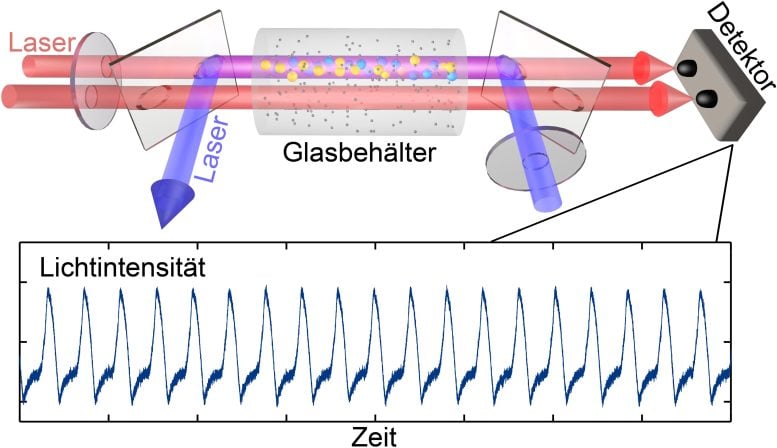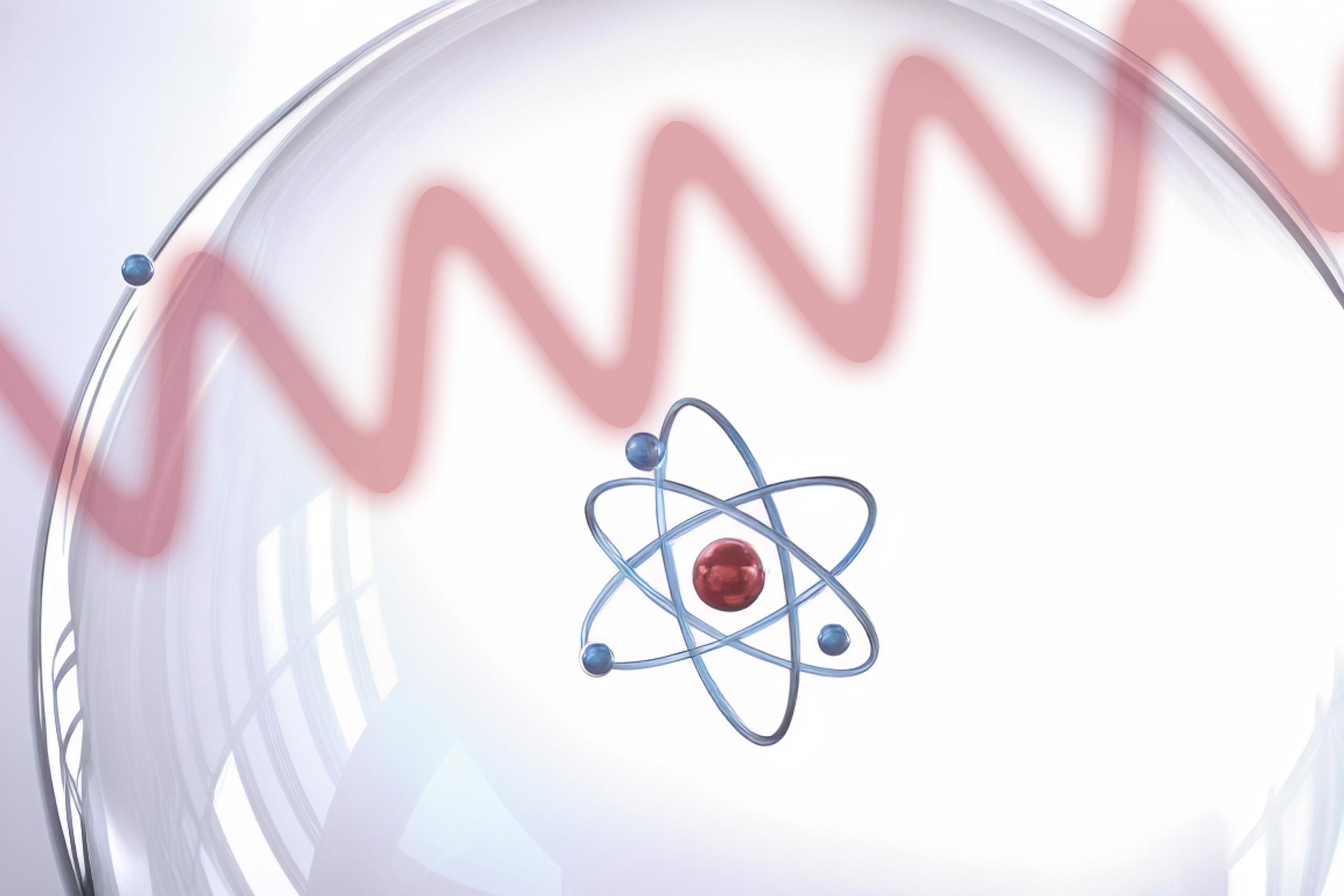A Rydberg atom has an electron which is far away from the nucleus. Credit: TU Wien
Researchers have created an extremely exotic state of matter. Its atoms have a diameter a hundred times larger than usual.
Time crystals, originally proposed by Nobel laureate Frank Wilczek in 2012, have now been successfully created using Rydberg atoms and laser light at Tsinghua University in China, with theoretical support from TU Wien in Austria. This new state of matter does not repeat in space like traditional crystals, but in time, displaying spontaneous periodic rhythms without an external stimulus, a phenomenon known as spontaneous symmetry breaking.
A crystal is an arrangement of atoms that repeats itself in space, in regular intervals: At every point, the crystal looks exactly the same. In 2012, Nobel Prize winner Frank Wilczek raised the question: Could there also be a time crystal – an object that repeats itself not in space but in time? And could it be possible that a periodic rhythm emerges, even though no specific rhythm is imposed on the system and the interaction between the particles is completely independent of time?
For years, Frank Wilczek’s idea has caused much controversy. Some considered time crystals to be impossible in principle, while others tried to find loopholes and realize time crystals under certain special conditions. Now, a particularly spectacular kind of time crystal has successfully been created at Tsinghua University in China, with the support from TU Wien in Austria. The team used laser light and very special types of atoms, namely Rydberg atoms, with a diameter that is several hundred times larger than normal. The results have now been published in the journal 
A static system with a continuous input of light leads to time-dependent periodic signals. Credit: TU Wien
Thomas Pohl was in charge of the theoretical part of the research work that has now led to the discovery of a time crystal at Tsinghua University in China: Laser light was shone into a glass container filled with a gas of rubidium atoms. The strength of the light signal that arrived at the other end of the container was measured.
“This is actually a static experiment in which no specific rhythm is imposed on the system,” says Thomas Pohl. “The interactions between light and atoms are always the same, the laser beam has a constant intensity. But surprisingly, it turned out that the intensity that arrives at the other end of the glass cell begins to oscillate in highly regular patterns.”
Giant Atoms
The key to the experiment was to prepare the atoms in a special way: The electrons of an DOI: 10.1038/s41567-024-02542-9











/https://tf-cmsv2-smithsonianmag-media.s3.amazonaws.com/filer_public/34/31/3431771d-41e2-4f97-aed2-c5f1df5295da/gettyimages-1441066266_web.jpg)








Discussion about this post